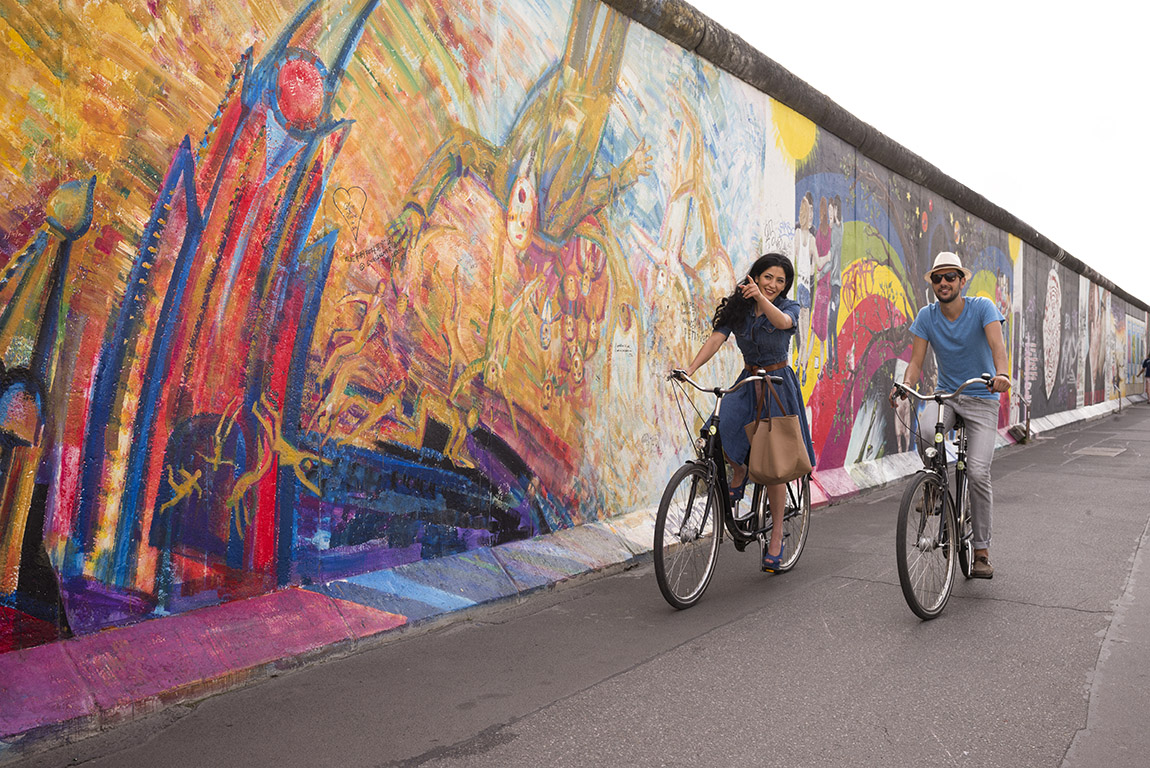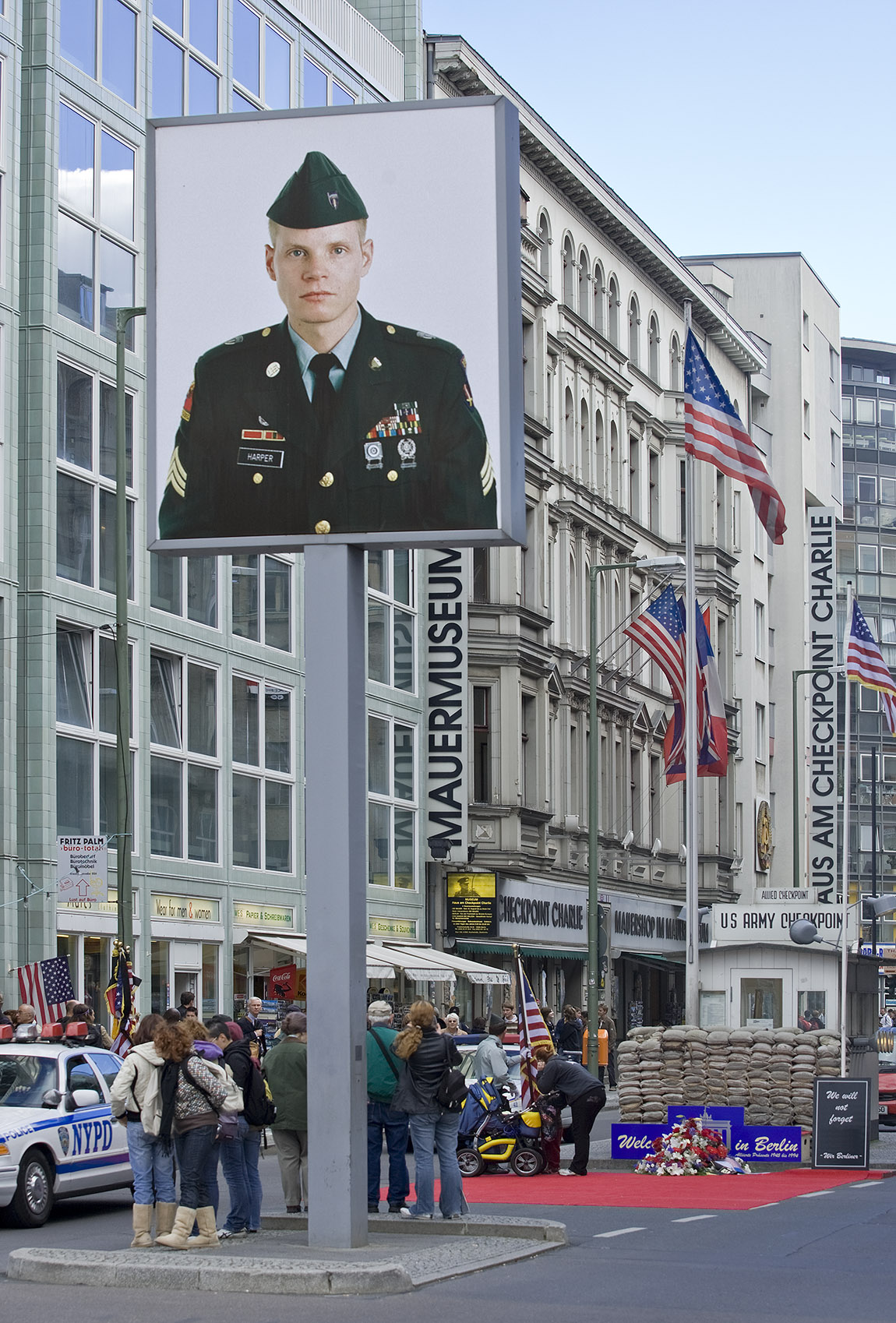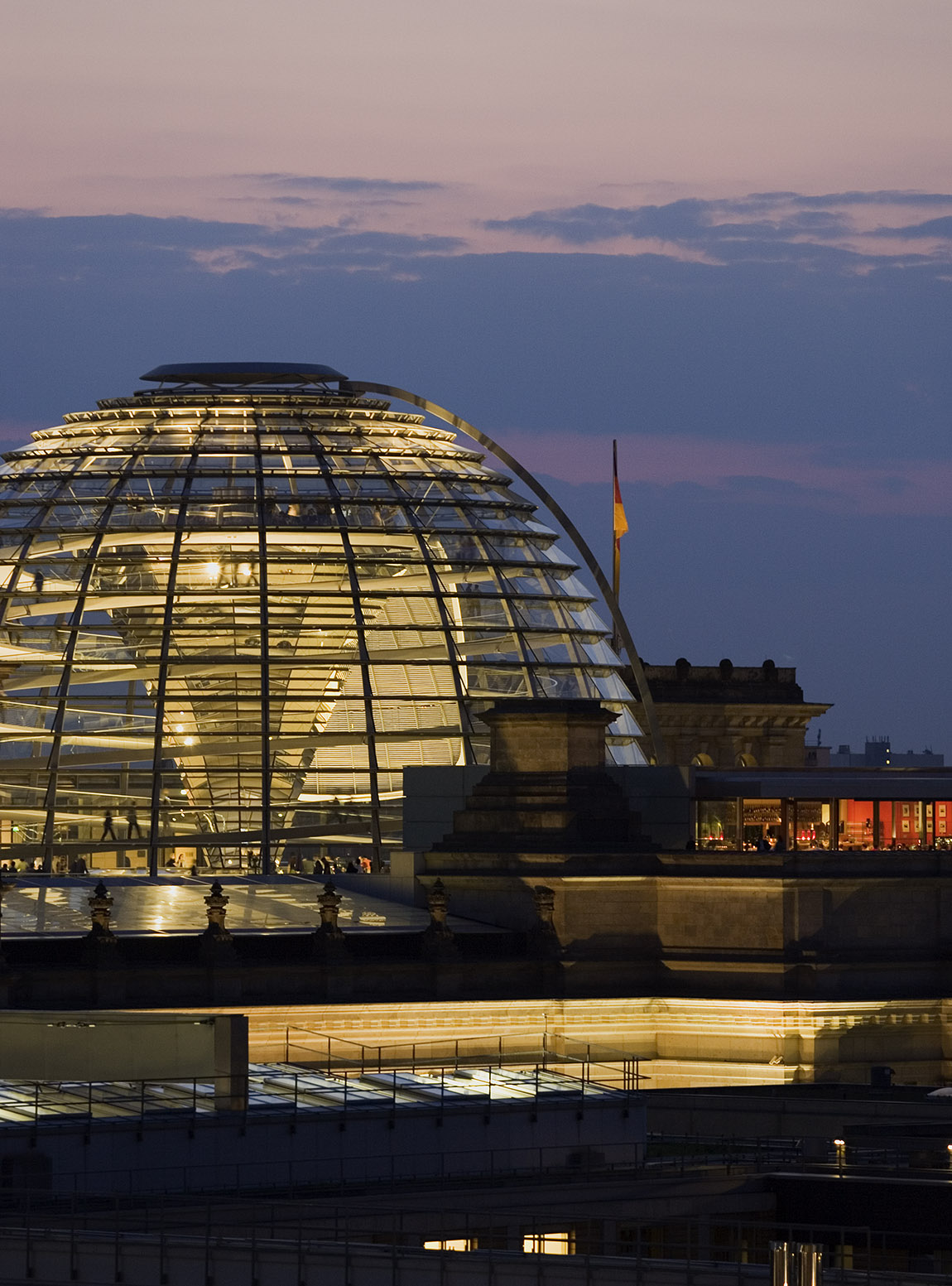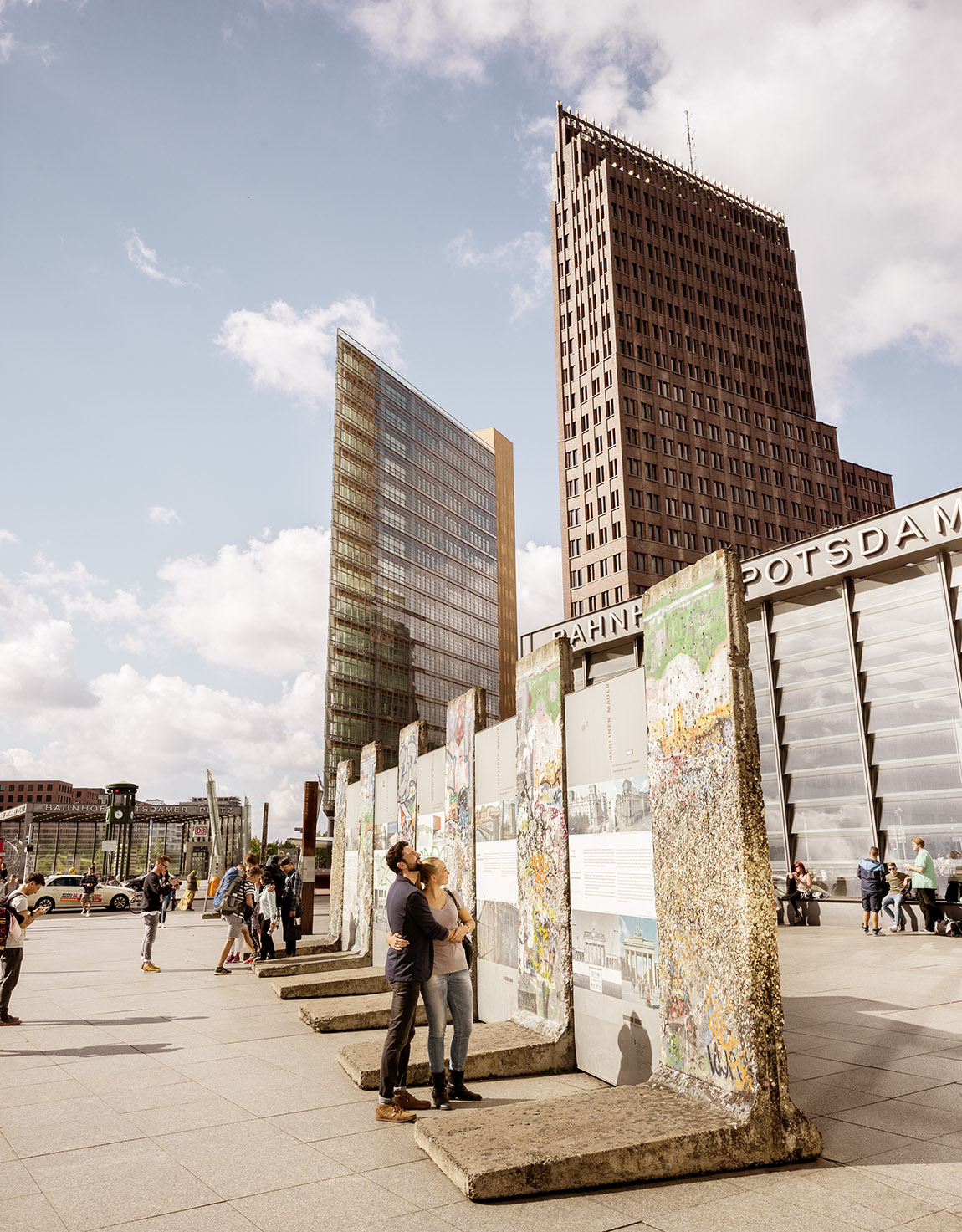35 years of the fall of the Berlin Wall – Contemporary witnesses remember
TEXT: NANE STEINHOFF

Photo: Marco ten Donkelaar, Unsplash
On 8th November, the 35th anniversary of the fall of the Berlin Wall brought people from all over the world together in Berlin, the city of freedom. More than half a million guests gathered to celebrate freedom together with a spectacular program under the motto ‘Keep up freedom!’.
“The Festival of Freedom has reached people’s hearts,” explained Burkhard Kieker, managing director of visitBerlin. “Berlin is the city of freedom and remembrance – the anniversary and the many guests from home and abroad have shown that it has global appeal.” A highlight of the special celebrations held in commemoration of the 35th anniversary of the fall of the Berlin Wall on 8th November was the four-kilometer-long open-air presentation of over 5,000 posters along the former route of the Wall, telling stories of freedom from 1989 to the present day. Impressive music performances, workshops and exhibitions also took place, including the democracy festival ‘Revolution! – and then?’ in the Campus for Democracy. Visitors and Berliners were invited to immerse themselves in the city’s moving history and to remember the peaceful revolution.

East Side Gallery Berlin. Photo: visitberlin, Philip Koschel
On the occasion of this event, the city welcomed contemporary witnesses and international personalities who are committed to freedom and democracy around the world. These included the Belarusian opposition leader Sviatlana Zichanouskaya, the Iranian women’s rights activist Masih Alinejad and the Venezuelan opposition leader Leopoldo López as well as civil rights activists such as Marianne Birthler and other contemporary witnesses from 1989. The Governing Mayor of Berlin, Kai Wegner: “Just as brave people fought for freedom and democracy 35 years ago, many brave people around the world are fighting for it today. Our unrestricted solidarity goes out to them, Berlin as a city of freedom stands firmly at their side.”

Berlin Wall Memorial. Photo: visitBerlin, Günter Steffen
Burkhard Kieker added: “35 years ago the wall fell in Berlin and with it a border that separated Germany for almost three decades. The courage and strength of the people who stood up for freedom and democracy in East Germany in 1989 made this historic event possible. Together with you, we would like to remind you that freedom cannot be taken for granted. Berlin’s history is also a role model for many people today who stand up for freedom and fight for it around the world, which is why we invited some of them to the anniversary of the fall of the Berlin Wall.”

Checkpoint Charlie. Photo: visitberlin, Wolfgang Scholvien
Experience the Berlin Wall
The construction of the Berlin Wall began on August 13, 1961. From one day to the next, it changed a nation. The wall – it has become a symbol of a divided city, a divided country, the Cold War. Although it was built over six decades ago, it is still very much alive in many places, such as at the East Side Gallery, the longest open-air gallery in the world. This art mile stretches 1,316 metres on the banks of the Spree in Friedrichshain, making it the longest continuous section of the Wall. 100 works of art document the political developments of the years of reunification. Particularly popular: Dimitrji Vrubel’s brotherly kiss and Birgit Kinder’s Trabant breaking through the wall.

Then & Now. Photos: Chris John de Witt & Jo Furch
Equally impressive is the Parliament of Trees Against Violence and War, which is located on the banks of the Spree opposite the Reichstag building. The artist Ben Wagin created this memorial in 1990 in the area of the former border strip of the Berlin Wall. He worked on 58 parts of the wall, granite slabs commemorate 258 victims of the wall who died on the inner-German border. The centerpiece of the memorial is a square of 16 trees that the 16 all-German Prime Ministers planted in 1990 – the actual Parliament of Trees.

Then & Now. Photos: Chris John de Witt & Jo Furch
There are two important places in Berlin Mitte that also impressively convey Berlin’s history. The Berlin Wall Memorial on the former border strip includes four themed stations with historical audio and visual material, a visitor centre and an observation tower. On Bernauer Straße, there is a 70-metre-long piece of the Berlin Wall with a border strip and a watchtower. At that time, the sector boundary also ran through the invalid cemetery. Over 90 percent of the graves had to make way for the death strip with its watchtowers, control strips, the walking area for the guard dogs and the column path. Around 180 meters of the former hinterland wall are partially preserved here.

Then & Now. Photos: Chris John de Witt & Jo Furch
Tracing the Berlin Wall
Whether on foot or by bike: on beautiful autumn days the Berlin Wall Trail is absolutely worth it. It marks the course of the former GDR border fortifications with West Berlin and runs 155 kilometers around the former half-city. The Berlin Wall Trail is divided into 14 individual routes that are between seven and 21 kilometers long. Historically interesting sections with remains or traces of walls alternate with scenic routes. A possible tour goes, for example, from Wollankstrasse to Nordbahnhof or from Potsdamer Platz to Warschauer Brücke.

The Oberbaum Bridge. Photo: DZT, Dagmar Schwelle
And if the weather doesn’t cooperate? Then you can still trace the Berlin Wall, for example in the Wall Museum – House at Checkpoint Charlie. Visitors take a journey through time into divided Berlin. Rainer Hildebrandt founded the Wall Museum in 1962, with which he documented the escape plans of GDR citizens. Original objects such as an old Volkswagen with a hidden trunk, a mini submarine, a hot air balloon and a suitcase pushed together, tell of these escape attempts.
The Palace of Tears also provides insight into personal stories. In 1962, the GDR built a check-in hall at Friedrichstrasse train station, which was used for departures from East to West Berlin. Friends and families said goodbye in the glass and steel pavilion – mostly with tears. The permanent exhibition “Site of German Division” commemorates these fates.

East Side Gallery. Photo: visumate
Voices for freedom
On the occasion of the anniversary of the fall of the Wall, we chatted to contemporary witnesses who spoke about the fall of the Wall and Berlin as a city of freedom. Among the contemporary witnesses were visitBerlin managing director Burkhard Kieker, journalist and writer Marion Brasch, the German-Iranian artist Kani Alavi, initiator of the artist initiative ‘East Side Gallery’, as well as Frank Ebert, Berlin’s state representative for coming to terms with the SED dictatorship, and the long-time journalist Ewald König and Leanthe Schmidt, who fled the GDR in 1975.
Marianne Birthler, former GDR civil rights activist and former federal commissioner for the Stasi records remembered: “35 years ago I saw the longing for freedom and democracy. Today I look at the countries and people who are still fighting for freedom today. The fall of the Berlin Wall and the peaceful revolution are still seen as role models in the world today. My wish is that other companies also succeed. Freedom and democracy must be defended.”

Mauerpark. Photo: visitberlin, Philip Kosche
Leanthe Schmidt, who fled the GDR illegally with her family in 1975, first arrived at Tempelhof Airport. She still remembers the immense feeling of freedom she felt at that moment. When the Wall came down on 9 November 1989, Leanthe had already been living in freedom for 15 years. “And now that was possible for everyone. That made me incredibly happy, of course,” she said.
Moritz van Dülmen, Managing Director of Cultural Projects Berlin: “The focus of this year’s anniversary of the fall of the Berlin Wall are the values that were fought for 35 years ago and that are still central today: freedom and democracy. Our poster installation conveys this and we cordially invite everyone to celebrate the anniversary together in Berlin today and tomorrow.”

Photo: visitberlin, Wolfgang Scholvien
Masih Alinejad, Iranian journalist and women’s rights activist: “The fall of the Berlin Wall continues to this day as a sign of hope, democracy and freedom. Unfortunately, there are still walls all over the world. Stand with us, with everyone who stands up for freedom and democracy.”
Leopoldo López, Venezuelan opposition leader: “The fall of the Berlin Wall is more than a historical event. 1989, the fall of the Berlin Wall, is a sign of hope. In Venezuela we know that change is coming, just as I am sure those on the front lines of the fight against communism before 1989 knew that change was coming. Over 70 countries are part of the same fight today. It’s part of the same continuum. It is part of the fight for freedom, democracy and human rights.”

Photo: visitberlin, Philip Koschel
Subscribe to Our Newsletter
Receive our monthly newsletter by email





